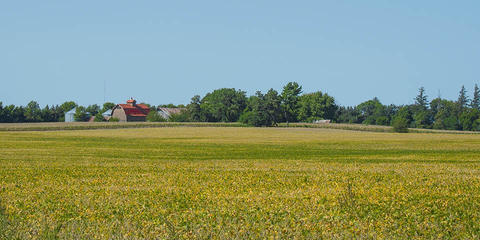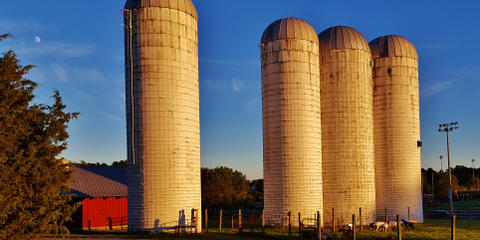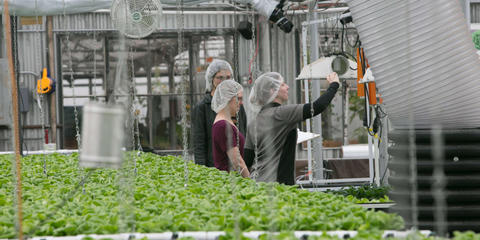Federal funding programs are under review as of 1/27/25. We'll make updates as new info is released.

Conservation Stewardship Program: Grasslands Conservation Initiative (CSP)
The Conservation Stewardship Program (CSP) offers technical and financial assistance to help agricultural and forest producers take their conservation efforts to the next level. The program is designed to compensate agricultural and forest producers who agree to increase their level of conservation by adopting additional conservation activities and maintaining their baseline level of conservation. CSP is for producers who are passionate about conservation and environmental stewardship.
Eligibility
CSP may be a good fit for your operation if:
-
You own or rent, and manage land for agricultural or forest production, such as cropland, rangeland, grassland or pasture.
-
You have already been doing conservation work on my operation.
-
You want to expand my existing conservation efforts to achieve a higher level of environmental stewardship.
-
You intend or plan to maintain control of the land for at least five years.
-
Your land complies with highly erodible land and wetland conservation determination provisions (if unsure, ask your local USDA Service Center)
-
You have a social security number or employer identification number issued by the IRS.
-
You have an adjusted gross income is less than $900,000 (does not apply to Indian Tribes).
-
As a member of an entity or joint operation, you have the authority to make management decisions for the business.
Land Eligibility
-
Q. What lands are eligible for CSP?
- A. Eligible lands include private agricultural lands, agricultural Indian lands, nonindustrial private forest land, farmstead, associated agricultural lands, and public land that is under the control of the applicant and part of their operation. There is no minimum acreage requirement. CSP enrolls your entire operation into the program, not just one specific field or tract. All land must be in compliance with USDA highly erodible land and wetland conservation provisions to be eligible for CSP.
Eligibility Restrictions on Agricultural Production
-
Q. I am new to farming and in the process of clearing non-ag land to create a farm. Am I eligible for CSP?
- A. Not yet. The land must be actively used for producing an agricultural product. Lands being cleared or prepped for future agricultural production are not eligible for CSP until an agricultural operation has been established and crops, food or fiber have been successfully produced. Be sure that you check with USDA for highly erodible land and wetland compliance before clearing sod or ‘sod busting.’
Terms
CSP Contracts
The program represents a genuine commitment to conservation – CSP contracts are for five years, with the opportunity to compete for a contract renewal if you successfully fulfill the initial contract and agree to achieve additional conservation objectives. An NRCS conservation planner will work closely with you, throughout the entire contract process.
Contract payments are based on two components:
-
Payments to maintain the existing level of conservation, based on the land uses included in the contract and an NRCS assessment of existing stewardship at the time of enrollment, and
-
Payments to implement additional conservation activities.
Most participants will be eligible for a $4000 minimum payment during any year that their total annual contract payment falls below the minimum payment amount.
CSP Renewals
Existing CSP participants may be eligible to renew their contract for an additional 5-year term during the fifth year of their initial contract. Participants who have met the terms of their initial contract and who agree to implement more conservation activities can compete for a renewal contract. To meet the renewal stewardship threshold, the participant must agree to meet or exceed two additional priority resource concerns or agree to adopt or improve conservation activities to achieve higher levels of conservation for two existing priority resource concerns.
Application Instructions
The first step in the process, is to notify NRCS of your interest in CSP. Then a conservation planner will schedule a visit to your property. During that visit, they will walk the land with you to discuss and review any resource concerns. Following the site visit, the conservation planner will develop a conservation plan that includes a variety of conservation practices, activities and enhancements to improve the level of conservation benefit and to address the resource concerns.
Applications for NRCS conservation programs are accepted on a continuous basis. However, application ranking dates are set at key times throughout the year.
-
Find application ranking dates for your state.
-
See payment schedules for your state.
-
See application.
Resources
Related Programs

Farm Storage Facility Loan Program (FSFL)
Farm Service Agency
- Loan
- Infrastructure
- Equipment
- Storage
- Lighting
- Delivery Vehicle
- National
- Oilseeds
- Peanuts
- Pulse Crops
- Hay
- Honey
- Biomass
- Fruits
- Vegetables
- Floriculture
- Hops
- Maple Sap
- Milk
- Cheese
- Yogurt
- Butter
- Eggs
- Rye
- Aquaculture
- Poultry
- Livestock
- Grains

ACRE3 Agricultural Energy Efficiency
Colorado Department of Agriculture
- Grant
- Cost Share
- Loan
- Alternative Energy
- Conservation
- Irrigation
- Storage
- Greenhouse
- CO
- Any

ACRE3 Irrigation Hydropower Programs
Colorado Department of Agriculture
- Grant
- Cost Share
- Loan
- Hydro Power
- Alternative Energy
- Irrigation
- Conservation
- Water Management
- Equipment
- CO
- Any

ADM and Partners' Climate-Smart Solutions
ADM, U.S. Department of Agriculture
- Grant
- Conservation
- Climate-Smart
- AK
- AZ
- CO
- FL
- GA
- IL
- IN
- IA
- KS
- KY
- MT
- MI
- MN
- MS
- ND
- NE
- OH
- OK
- SD
- TN
- TX
- WI
- Corn
- Soybeans
- Wheat
- Peanuts
- Sorghum
- Flax
- Hemp
- Canola
- Edible Beans
- Pulse Crops
Details
Organization
Financial Instrument
Easement
Minimum Award Amount
$4,000
Total Program Funding
$4,025,000,000
Updated October 27, 2025
Image Credit: USDA - NRCS
This information was gathered from public sources. Ambrook is not responsible for or able to affect the results of any financial programs listed, nor are they responsible for any incorrect information that is listed or is on the hyperlinked external sites. All information is subject to change.
Explore hundreds more programs on Ambrook.